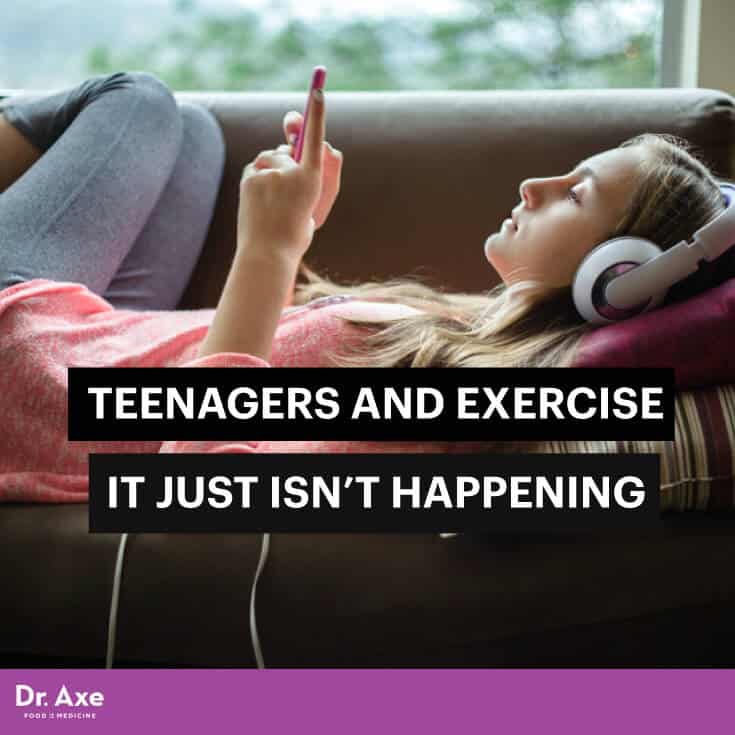This Dr. Axe content is medically reviewed or fact checked to ensure factually accurate information.
With strict editorial sourcing guidelines, we only link to academic research institutions, reputable media sites and, when research is available, medically peer-reviewed studies. Note that the numbers in parentheses (1, 2, etc.) are clickable links to these studies.
The information in our articles is NOT intended to replace a one-on-one relationship with a qualified health care professional and is not intended as medical advice.
This article is based on scientific evidence, written by experts and fact checked by our trained editorial staff. Note that the numbers in parentheses (1, 2, etc.) are clickable links to medically peer-reviewed studies.
Our team includes licensed nutritionists and dietitians, certified health education specialists, as well as certified strength and conditioning specialists, personal trainers and corrective exercise specialists. Our team aims to be not only thorough with its research, but also objective and unbiased.
The information in our articles is NOT intended to replace a one-on-one relationship with a qualified health care professional and is not intended as medical advice.
Teenagers and Exercise: It Just Isn’t Happening + What to Do About It
June 13, 2017

I’m not prone to sounding the alarm, but we’re staring at an epidemic when it comes to teenagers and exercise. A study published in the January 2016 issue of Pediatrics, examining 549 teenagers who were equipped with GPS devices to track their movements (or lack thereof), the average amount of activity was only 39.4 minutes per day! (1)
Unfortunately, this data actually explains some of the depressing statistics we’ve seen develop over the last couple of decades. As reported by the Centers for Disease Control, childhood obesity has more than doubled in children and quadrupled in adolescents in the past 30 years. Yep, it starts early, as kids off to a bad start with their Standard American Diet and lack of exercise tend to not recover.
In fact, the percentage of children aged 6–11 years in the U.S. who were obese increased from 7 percent in 1980 to nearly 18 percent in 2012. And it’s even worse among teenagers, as the percentage of adolescents aged 12–19 years who were obese increased from 5 percent to nearly 21 percent over the same period. One in five is bad, but what about one in three? Yes, in 2012, more than 33 percent of children and adolescents were overweight or obese. (2)
So, what’s going on here? Why is this happening? Let’s take a dive into this disturbing study and then discuss some ways for teenagers to reverse these trends!
Teenagers Are Less Active Than Ever … and Why
When the New York Times looked at this study, it declared, “Teenagers Aren’t Getting Enough Exercise at School, or Anywhere.” (3) Indeed, taking a cross-section of adolescents (ages 12 to 16) from two large U.S. regions, the researchers examined accelerometers and GPS devices to assess 1) minutes spent and 2) proportion of time spent in moderate to vigorous physical activity (MVPA). Roughly, the ratio of girls to boys was even, and 31.3 percent were nonwhite or Hispanic.
The researchers hoped to find out where exactly teenagers were getting their activity, such as at school, home or another location. The results would then possibly reveal trouble spots, or opportunities, for teens to increase their activities plus simply make their different environments more suitable for exercise like cardio workouts.
The results were telling. While teenagers spent 42 percent of their days at school, only 5 percent of their time at school was spent being active. Less surprising was that teens were more active when near their schools or homes, but when inside their actual homes, their activity shrunk to very low levels. Also, it was found that girls were less active than boys — 2.6 to 5.5 fewer minutes per day of MVPA than boys in all locations except near school.
The researchers made several conclusions:
Although a majority of adolescents’ physical activity occurred at school, the low proportion of active time relative to the large amount of time spent at school suggests potential for increasing school-based activity. Increasing time spent in the neighborhood appears promising for increasing overall physical activity, because a high proportion of neighborhood time was active.
While I agree with these conclusions, it’s worthwhile to dig deeper into why such inactivity is happening. In fact, this study confirms what many parents already feared: There are simply too many factors that have the inevitable result of less activity for their teenagers. Like what, you ask? Well, here are just a few of of the factors:
1. The peeling back of gym classes
In a 2013 report by Harvard University’s School of Public Health, almost seven in 10 parents say their children’s schools do not provide daily physical education, even though experts recommend 150 to 225 minutes per school week. (4)
2. An overemphasis on standardized testing
Why has this occurred? Look no further than the fact that most communities consider a school staff to be successful if there’s impressive student performance on standardized achievement tests. (5)
3. Burdensome schedules and less sleep
Teenagers on honor tracks and/or involved with after-school activities or jobs simply burn the candle, and there is growing evidence that homework has increased for all students regardless of academic level. No wonder teens are always tired, eh? But also no wonder why they often don’t have the motivation or energy to exercise.
4. Early school days interfere with natural sleep cycles
For most teenagers, their school days get started before 8 a.m. despite evidence showing that teenagers naturally stay up late and should be sleeping at that hour. In fact, the PBS show “Frontline” took a deep look into this subject on a show entitled “Inside the Teenage Brain”:
With most high schools in the U.S. starting around 7:20 a.m. and with many teens going to bed between 11 and 12 p.m., sleep researchers worry that teenagers are suffering an epidemic that is largely hidden. Since students are often driving to school, to sporting events, and home from late-night parties, this sleep debt holds huge risks. Many high school students know of someone, often a high-achieving kid, who on the drive back from a sporting event or dance simply fell asleep at the wheel. On a less dramatic note, there are literally millions of adolescents who feel despondent, get poor marks, or are too tired to join high-school teams all because they are getting too little sleep. Because of their deep concern about these issues, sleep researchers are pushing for later school start times and are trying to introduce sleep issues into the high school curriculum. (6)
Recommendations for Getting Your Teen More Active
While the data is troubling and the current system seems almost set up for teenagers to fail physically (even if they succeed academically), there are some innovative ways for teenagers to get active again. How much? Well, the CDC recommends at least 60 minutes of activity a day for teenagers, but only one in 10 (!) of adolescents gets that much at present (7).
1. Accept, even grudgingly, the current schedule … and get more sleep!
While some forward-thinking school districts have delayed school start time for their teenagers, the majority will not budge. Since that’s the case, teenagers simply need to adjust their schedules to try and get at least eight hours a night of sleep. For the teen who seemingly can’t sleep, that might mean a bedtime of 10 p.m. during the school week.
2. Build more natural activity into the school day
Use a fitness tracker to find out how much you’re moving each day, and then make an effort to increase the number of steps you take each day. Take a walk around your neighborhood when you get home from school and the sun is still out. Make more of an effort to walk around school. Go up and down the stairs a lot. Don’t always sit, such as in the library, but instead stand when you’re studying or reading occasionally.
Those are just some exercise hacks to get more movement into your day.
3. Make your home a more active place
Far too many teens don’t help around the house. Instead, help out in the kitchen, do the dishes, work in the yard for 15 minutes, stand up when you study, do some BurstFit training at home or a short HIIT workout, etc.
4. Stop allowing the smartphone to eat up chunks of time
One of the big reasons for teenagers’ lack of sleep and less efficient study is a phenomenon that most age groups actually suffer from but which teenagers lead the pack: smartphone addiction, aka nomophobia. There are five steps I recommend in my article about smartphone addiction that I highly recommend you take to end this destruction addiction. I’m not saying get rid of the smartphone, but it should play a much smaller role in the teenager life.
5. Eat a better diet
Again, lack of energy is a major reason why teen’s aren’t moving much, as while crammed schedules and not enough sleep partly explain this epidemic, the other variable is an overdependence on processed foods, sodas and grains amid very little consumption of organic vegetables, free-range and antibiotic-free meats, probiotic foods and the like. The teen and his or her parent needs to carefully consider giving up the nutritionally bankrupt school meals and bring healthy school lunches to school instead, as well as perhaps give up gluten or grain altogether.
6. Rule out an eating disorder
Lastly, teens, especially girls, can succumb to eating disorders such as bulimia nervosa in a dangerous and foolhardy attempt to become thinner, or as a result of feeling intense anxiety. There are both warning signs to heed but also several natural ways to deal with this disorder … and heal.



